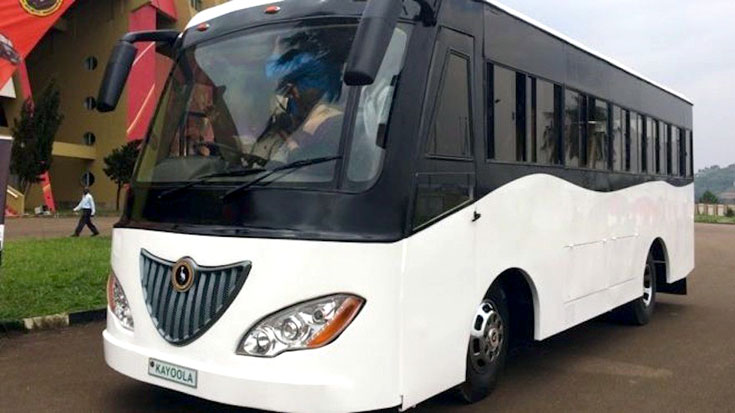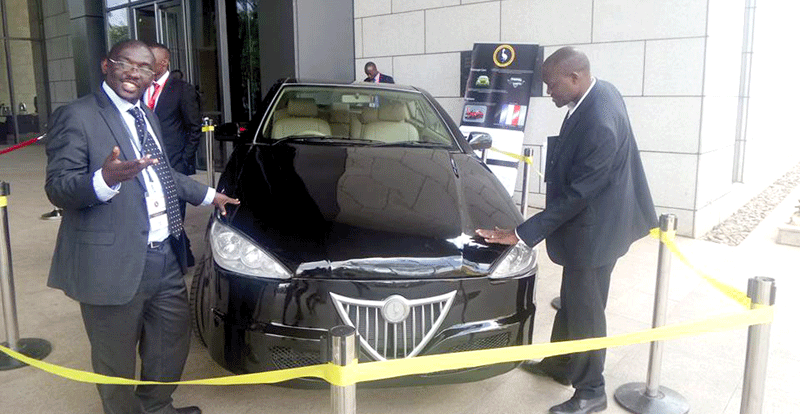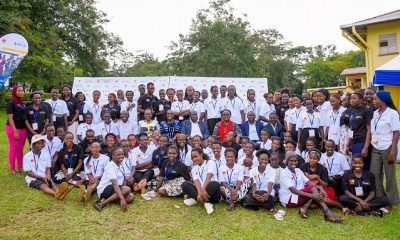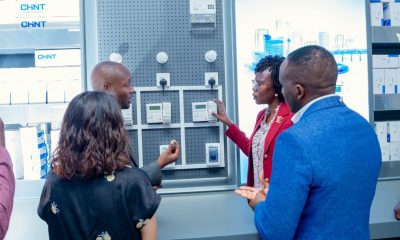Business
Funding hurdles threaten Kiira Motors vehicle manufacturing project

The Kiira Bus made by Makerere University still remains a prototype after close to a decade
As Uganda’s ambitious automotive manufacturing project Kiira Motors, reaches an inflection point, a mismatch between funding and streams and project timelines is threatening progress.
Kampala had set mid-2021 as the target for putting homegrown vehicles on the road with construction of the manufacturing facility ongoing in Jinja, 80 kilometres east of the capital.
The first hint of trouble came during a May 8 site visit by Dr. EliodaTumwesigye, the Minister for Science and Technology. Speaking for the National Enterprise Corporation – Construction, the prime contractor, Lt. General Fred Mugira boasted that he could hand over the project keys in less than a year, if money was available. Gen. Mugira said his team had been forced to slow down just to keep pace with the sluggish funding by his employer Kiira Motors.
Now, officials at Kiira Motors Corporation KMC, lament that the project has not achieved sufficient buy-in by government technocrats, resulting in discordance between project timelines and funding releases by the treasury.
“Up to this point, the funding releases have deviated from the roadmap. The project was allocated seed funding of Usgs 143.7 billion to be released over a four year window running from 2018 to 2022 as capitalisation to kick-start automotive manufacturing. But we are already dealing a shortfall of Ushs 2. Billion in the first year,” says KMC Executive Chairman Professor TikodriTogboa.
According to official plans, the project was supposed to have received Ushs 24 billion during the current financial year. That would be followed by Ushs 44 billion in fiscal 2019/20, Ushs 43 billion in 2020/21 and a final tranche of Ushs 32.7million in fiscal 2021/22.
However, only 21.586 billion of this year’s allocation has been released so far while cabinet has approved only Ushs 24 billion of the Ussh 44 billion that was programmed for 2019/20.
“If we don’t keep pace with those figures, there will be a delay in delivering the first vehicles to the country,” Tikodri told the minister.
KMC Chief Executive Isaac Musasizi says Ushs 21 billion of the Ushs24 billion allocated for fiscal 2018/19, was supposed to go into construction of the assembly facility and the pilot bus project while the remaining Ushs 3 billion was supposed to meet the organisational overheads such as salaries and rent. The electric pilot buses were supposed to hit the road in January 2019.
“At management level, these funding gaps put us in a difficult position. Since you cannot avoid to pay salaries and rent, what do you do with the money meant for construction? Do you keep it until more money comes for work to resume?” he wonders.
He does not see a pause in construction as a viable option given the associated costs. Besides demobilization and remobilization costs, KMC would also have to separately contract and pay another entity to provide security for the work that has already been done.
Musasizi’s hole is getting only deeper given that the funding gap has expanded nearly tenfold to Ushs 20 billion for the coming financial year where only Ushs 24 billion of the planned Ushs 44 billion has been approved by cabinet. The UGX 20 billion shortfall has set construction back by UGX 7 billion, plant machinery by UGX 6 billion and the vehicle kits by a smilar amount.
“At this point we were also supposed to lock in the very detailed specifications of the assembly lines so that this also informs some final integration of the electrical, plumbing and some of the other mechanical designs within the plant.
We also wanted manufacturing to start for the first batch of vehicles we will be putting the market, but this cannot happen unless the funding gap is addressed,” Musasizi explains.
In all, the project has received only Ushs 29 billion of the Ushs 154 billion that was pledged by cabinet way back in 2012, to support the ramp-up to low rate vehicle production by 2018.
“The 2021 timeline is incumbent on availability of funding because now we have passed the conceptual stage. The designs are there, the contractor is on site. The only thing missing is the money,” Musasizi says.
He says KMC in advanced stages to engage the prospective technology transfer and assembly partner.
“If you look at the money we are talking about for KMC, it is more about the technocrats buy-in, not money. If indeed there is a national gap in money available to do such things, then we should have a firm revised commitment along which we can move forward,” he says.
Under KMC’s project implementation matrix, buses will be the first vehicles to come off the assembly line in mid-2021. These would be followed by light to medium duty and pickup trucks in 2022 with a line for SUV’s following in 2025.

Unveiling the plan for Uganda’s car manufacture
Executive Sedans which are targeted at the elite market will not require an assembly line and will be produced on order under low volume production from 2025 or earlier depending on when orders come in.
“Since there will no assembly line, if orders came even today, they can be delivered using basic assembly tools because so long as you have engaged your suppliers who can give you parts, final integration should not be a big problem for a niche market where you are producing 100 units a year,” says Musasizi.
The startup facility is designed to an initial output of 5000 units across the entire product range, peaking at 150,000 units a year when the entire plant is fully built.
Tikodri argues that motor vehicles aside, Uganda needs to invest more in manufacturing if it is to increase the contribution of industry to national GDP. The industrial sectors share of Uganda’s GDP declined from 6.3 percent in 1982 to 5.4 percent in 2018 which is below the 12 percent average for LDC’s.
“It is a well-documented fact that manufacturing remains the core driver of GDP growth and direct employment globally. However in Uganda, manufacturing has played a rather peripheral role to economic development,” Tokodri says adding that the country has just over 4,725 factories, mostly micro, small and medium enterprises which account for 80 percent of manufactured output and 90 percent of the private sector.
“These are indicators that the real manufacturing sector is modest despite the Vision 2040 outlook for transforming Uganda into a middle income economy with industrialisation as a key ingredient.”
Tikodri adds that the establishment of the KMC plant is expected to catalyse investment by SME’s in the manufacture of vehicle parts and components such as brake pads, nuts and bolts, seats, bumpers and vehicle electronics and navigation systems among others.
According to Dr. EliodaTumwesigye, the minister for science, technology and innovation, despite widespread skepticism even within the government bureaucracy, national and regional population projections and current national expenditure patterns justify the investment in domestic automotive manufacture.
He says while Ugandans spent $190 million on vehicle imports in 2005, this figure had risen to $450 million by 2017.
“Indeed after petroleum and related products which cost $1.017 billion, importation of vehicles was the second largest value imported item in Uganda in 2017. By having our own assembly plant here, we shall be reducing on the hemorrhage of our dollars to foreign markets while also creating jobs here,” he argues.
Regionally, vehicle imports have been equally rising in the East African Community. The region imported 158,000 vehicles in 2011. By 2015 this had increased to 257,000 vehicles with 0.5 million now projected for 2027.
Sedans dominated the imports accounting for 67percent of all vehicle imported into region while commercial vehicles accounted for 33 percent. Vehicle imports are growing at 17 percent annually according to figures for 2017.
The population in the East African Community member states currently standing at 182 million is projected to reach 442 million by 2050. Uganda’s current population of 40 million is projected to reach 63.8 million by 2030 and 105.7 million by 2050.
These numbers have made East Africa a hotbed for automotive assembly with several global manufacturers setting up assembly shops in Kenya and Rwanda in recent years.
“The market for vehicles is going to be huge and Kiira motors and Uganda should position themselves to dominate this market,” Dr. Tumwesigye says adding globally, future mobility and transport research is a big ticket item.
Comments


























